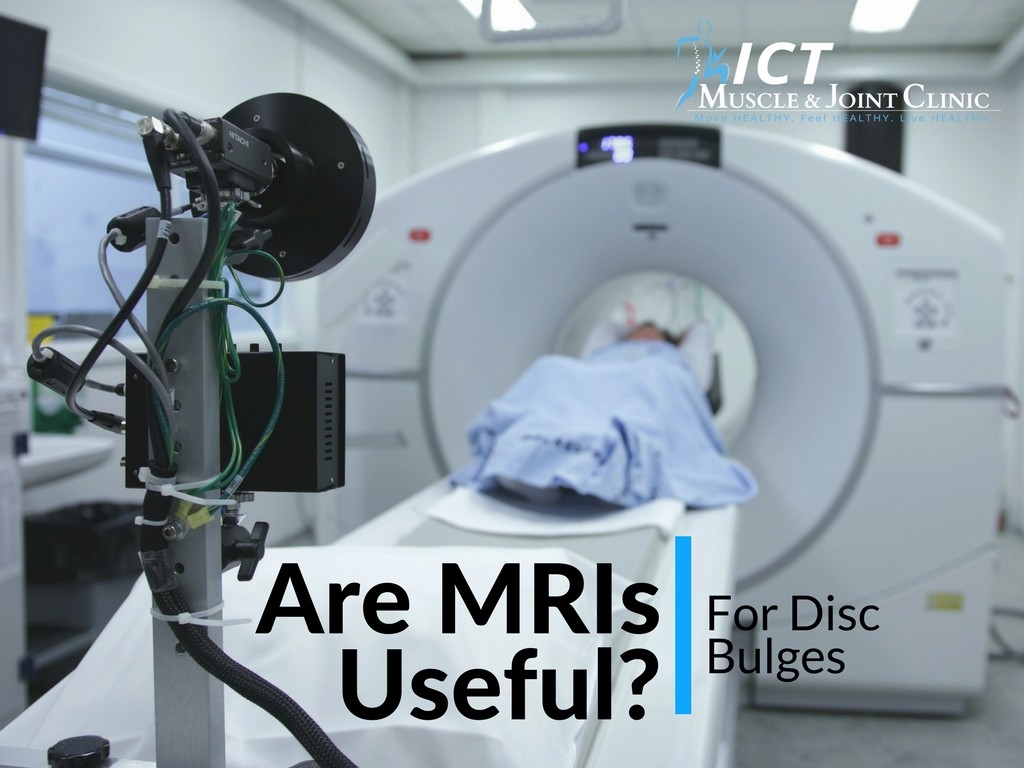Are MRIs of Disc Herniations Useful?
This question is becoming more and more controversial for neck and low back pain. For the past few decades, healthcare has largely based its treatment options for disc herniations on image findings (X-ray, MRI, CT Scans). With these advanced tools, one would think positive outcomes with disc herniations would be significantly higher; however, different types of clinicians come to different conclusions when using different diagnostic and clinical tests. (1,2) This creates an approach based on a doctor’s theory of pain rather than a comprehensive, evidence-based approach.
Due to the lack of better outcomes (long-term pain reduction, quality of life, decreased health costs, self-efficacy, and independence) with using these tools, as well as the different interpretations of these tools we need to rethink their usefulness. (3)
Does a Picture say a thousand words?
Let’s say you want to buy a new Chevy Tahoe. Would you buy the Tahoe based on a picture alone? A smart person would say no. There are many things to consider when buying a new vehicle. For starters, you would make sure there is an engine under the hood. Other things to consider: the interior, mileage, how well it runs on the highway, etc. The point is, you would make your decision based on several factors, not just a picture; a picture does not say a thousand words.
Imaging, typically MRI, of the spine for disc herniations (aka slipped disc, bulges) should not be the sole, or most important factor, in deciding a course of action for treatment. The process on deciding what to do, and the relevance, for a disc herniation should be multi-factorial just as it is when purchasing a new vehicle.
Bulging Discs in Non-Painful People
Ron Donelson, former vice president of the American Back Society, stated “the only time it really matters where the pain is coming from is if some invasive treatment, like an injection or surgery, is being contemplated. (4) So, are disc findings on images useful? The answer is relatively no unless you are deciding on an injection or surgery and then you better make sure that the source of pain is discogenic and have exhausted other less invasive options first. You can always become more invasive (aggressive), but you cannot always undo invasive care.
Research is constantly pointing out alterations (bulging, protrusion, extrusion, deterioration) with discs in non-painful individuals. In Quiroz-Moreno and college’s research, 55% of non-painful (5) individuals had these type of disc alterations. With more research supporting Quiroz-Moreno and college’s findings and the lack of productive outcomes we need to re-think the usefulness of disc herniation seen with imaging in terms of pain, outcomes, and interventions.
Resources:
1. Cushnaghan J, Cooper C, Dieppe P, Kirwan J, McAlindon T, McCrae F. Clinical assessment of osteoarthritis of the knee. Ann Rheum Dis. 1990;49:768-770.
2. Liesdek C, Van der Windt D, Koes B, Bouter L. Soft-tissue disorders of the shoulder: A study of inter-observer agreement between general practitioners and physiotherapists and an overview of physiotherapeutic treatment. Physiotherapy. 1997; 83: 12-17.
3. Wnuk NM, et al. Magnetic resonance imaging of the lumbar spine: determining clinical impact and potential harm from overuse. Spine J. 2018 Apr. 18
4. Donelson R. Rapidly Reversible Low Back Pain. Hanover, NH: SelfCare First; 2007. pg. 133
5. Quiroz-Moreno R, Lezama-Suarez G, Gomez-Jimenez C., Disc alteration of lumbar spine on magnetic resonance images in asymptomatic workers. Rev Med Inst Mex Seguro Soc. 2008 Mar-Apr; 46(2): 185-90.
About the author
Dr. Keith Sparks is an award-winning chiropractor, functional medicine expert, and the co-founder of ICT Muscle & Joint Clinic. Dr. Sparks’ emphasis of care originated within the fields of rehabilitation, soft-tissue therapies, and chiropractic. To date, he has brought this unique combination of skills into union with functional medicine. The sole purpose of intertwining these distinct skills, knowledge, and services is to provide incomparable care to his local community. Dr. Keith Sparks is often seen in the Wichita, KS community speaking at business events and teaching health and performance classes.
